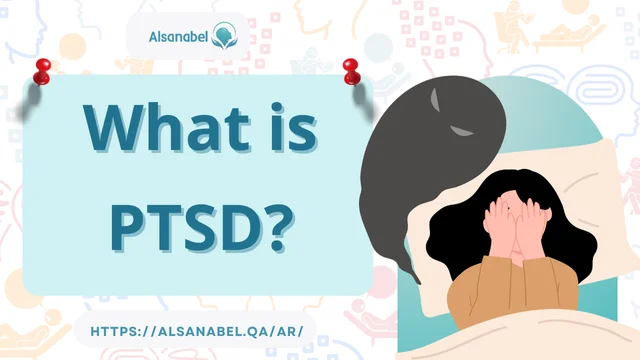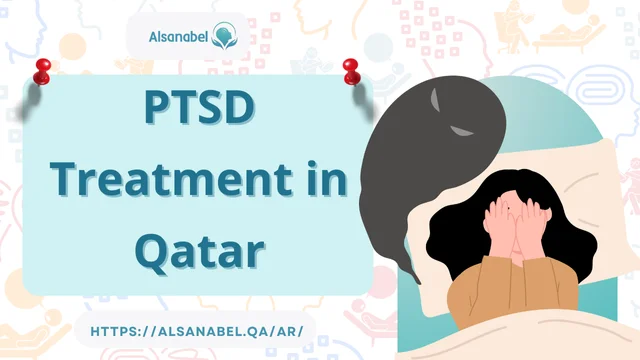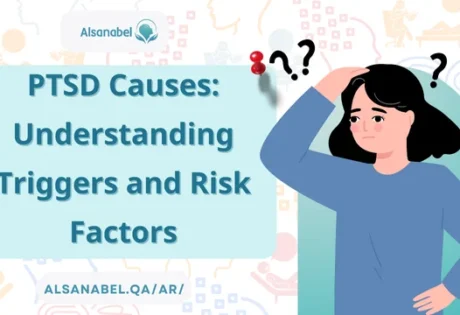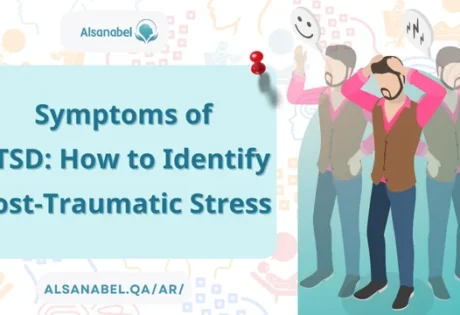
Post-Traumatic Stress Disorder (PTSD) is a mental health condition that can develop after an individual experiences or witnesses a traumatic event. Traumas such as accidents, war, natural disasters, or violent personal assaults can have a lasting impact on one’s mental health. PTSD affects people in different ways, making it important to understand the disorder, its causes, and how it differs from other mental health issues such as anxiety. In Qatar, mental health services are expanding to provide PTSD treatment in Qatar for those affected by trauma.
What is PTSD?
What is PTSD? PTSD is a mental health condition triggered by experiencing or witnessing a traumatic event. It is characterized by recurring, distressing memories of the event, flashbacks, nightmares, and severe emotional distress. While it’s natural to feel afraid or anxious after a traumatic event, for people with PTSD, these feelings don’t go away on their own and can last for months or years, interfering with daily life.

Understanding PTSD is crucial, as it is a complex disorder that can manifest in many ways, making it difficult to diagnose and treat without professional help.
Causes of PTSD
What are the causes of PTSD? PTSD develops after a person experiences or witnesses a traumatic event. Not everyone who goes through trauma will develop PTSD, but certain risk factors make some individuals more susceptible. The causes of PTSD include:
- Experiencing trauma: Events such as war, physical assault, sexual violence, accidents, or natural disasters are common triggers.
- Witnessing traumatic events: Even if a person is not directly involved, witnessing violence or disaster can lead to PTSD.
- Ongoing trauma: People who are exposed to continuous traumatic situations, such as abuse or combat, are at a higher risk.
- Genetics and biology: A family history of mental health issues, including anxiety or depression, can increase the risk of developing PTSD.
- Lack of social support: People who lack emotional and social support after a traumatic event may struggle to process the experience, increasing their risk of developing PTSD.
Types of PTSD
There are several types of PTSD based on how the symptoms manifest and the timeline of the condition:
- Acute PTSD: This is diagnosed when symptoms last for more than a month but less than three months after the traumatic event. It is the most common form of PTSD and can respond well to early intervention and treatment.
- Chronic PTSD: If PTSD symptoms last longer than three months, it is considered chronic. This form of PTSD often requires more intensive treatment and therapy.
- Complex PTSD: This type occurs when a person experiences prolonged or repeated trauma, such as ongoing abuse or war. The symptoms are often more severe and can involve difficulties with emotional regulation and interpersonal relationships.
- Delayed-Onset PTSD: Sometimes, symptoms of PTSD do not appear until months or even years after the traumatic event. This delayed reaction can be triggered by another stressful event or a significant life change.
PTSD vs Anxiety: Key Differences
PTSD and anxiety disorders share many overlapping symptoms, including feelings of fear, stress, and physical symptoms such as an increased heart rate. However, there are distinct differences between the two.
While both conditions can cause significant distress, PTSD vs anxiety differs mainly in their triggers and symptom patterns. PTSD is specifically triggered by a traumatic event, and sufferers often experience flashbacks or intrusive thoughts related to the trauma. In contrast, anxiety disorders may be triggered by a wide range of situations and are not necessarily linked to a specific past event.
People with PTSD often avoid places, situations, or people that remind them of the traumatic experience, while anxiety disorders can manifest in various forms, such as generalized anxiety, social anxiety, or panic attacks, which are not necessarily tied to a specific trauma.
How PTSD Affects Daily Life
PTSD can have a profound impact on daily life. Individuals with PTSD may struggle with flashbacks, nightmares, and emotional numbness. These symptoms can make it difficult to maintain relationships, perform well at work, or engage in social activities.
Understanding PTSD also means recognizing its physical symptoms, which can include insomnia, irritability, hypervigilance, and an exaggerated startle response. PTSD sufferers often feel as though they are in constant danger, even when they are safe.
PTSD Treatment in Qatar
In Qatar, mental health services are increasingly addressing the needs of people living with trauma. PTSD treatment in Qatar includes both psychological therapies like Dr. Sanabel Al Akras and medical interventions. Some common treatment approaches include:

- Cognitive Behavioral Therapy (CBT): This type of therapy helps individuals challenge and change unhelpful thought patterns and behaviors. Trauma-focused CBT, in particular, is used to help patients confront and process their traumatic memories in a safe and controlled environment.
- Eye Movement Desensitization and Reprocessing (EMDR): EMDR is a specialized therapy designed to help individuals process traumatic memories by using guided eye movements while recalling the traumatic event. This can reduce the emotional charge associated with those memories.
- Medications: Antidepressants and anti-anxiety medications can be prescribed to help manage the symptoms of PTSD, particularly in cases where psychotherapy alone may not be enough.
- Support Groups: Peer support groups allow individuals with PTSD to share their experiences and coping strategies in a supportive environment. This helps reduce feelings of isolation and provides additional emotional support.
PTSD FAQs
1. What is PTSD?
PTSD stands for Post-Traumatic Stress Disorder, a mental health condition that develops after a person experiences or witnesses a traumatic event. It is characterized by flashbacks, nightmares, severe anxiety, and emotional distress related to the trauma.
2. What are the causes of PTSD?
The causes of PTSD include experiencing or witnessing traumatic events such as accidents, war, violence, or natural disasters. Ongoing trauma, genetics, and lack of social support can also contribute to the development of PTSD.
3. How is PTSD diagnosed?
PTSD is diagnosed by a mental health professional based on a comprehensive evaluation of symptoms. Diagnostic criteria include the presence of flashbacks, avoidance behaviors, negative changes in mood and cognition, and heightened arousal following a traumatic event, lasting for at least one month.
4. Can PTSD go away on its own?
PTSD may not go away without treatment. While some individuals may experience symptom reduction over time, professional intervention through therapy or medication is often needed to manage the disorder and prevent it from worsening.
5. What are the main treatment options for PTSD?
The main treatment options for PTSD include Cognitive Behavioral Therapy (CBT), Eye Movement Desensitization and Reprocessing (EMDR), and medications such as antidepressants. Support groups and other therapeutic approaches can also help individuals cope with their symptoms.
PTSD is a serious mental health condition that can significantly affect a person’s quality of life. By understanding the definition of PTSD, its causes, and how it differs from anxiety, individuals and their families can seek the appropriate help needed to manage and treat this disorder. In Qatar, access to PTSD treatment at Al Sanabel Specialized Psychiatric Center In Qatar is expanding, offering hope and support for those who have experienced trauma. Early intervention and comprehensive treatment are key to managing PTSD and improving mental health outcomes.
%20(2).jpg)



